Luận án Nghiên cứu ứng xử tĩnh, ổn định và dao động dầm composite với tiết diện khác nhau
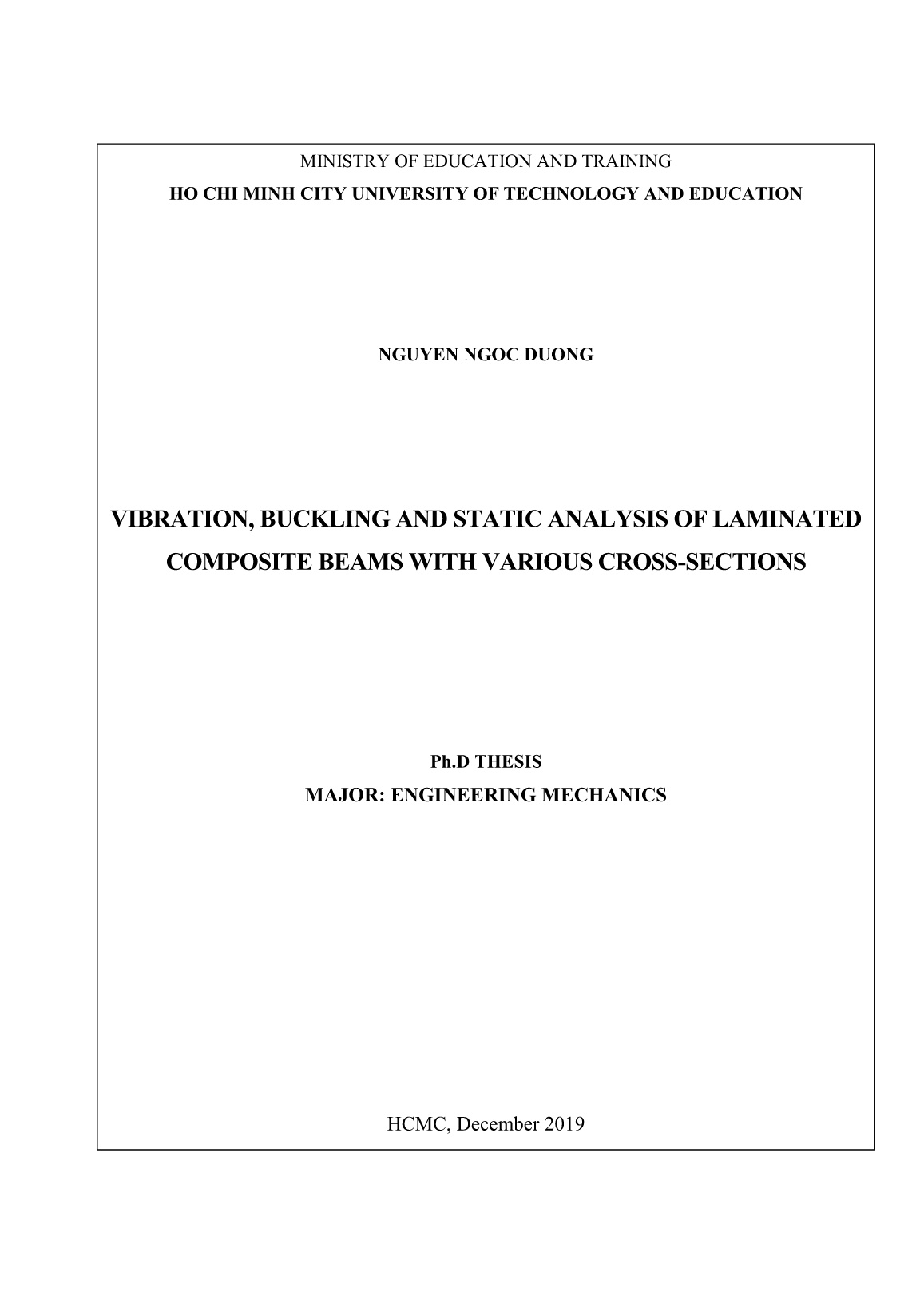
Trang 1
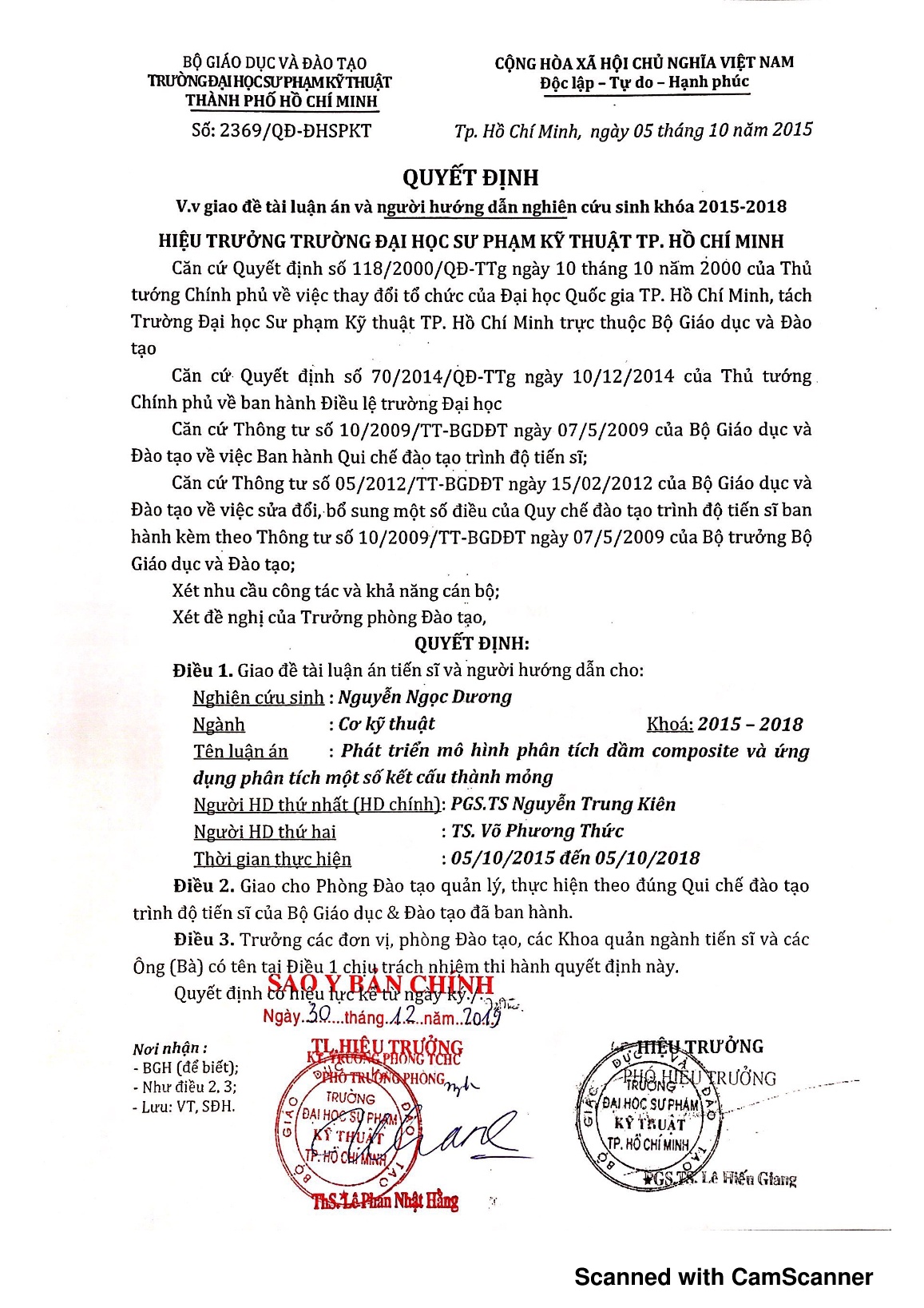
Trang 2
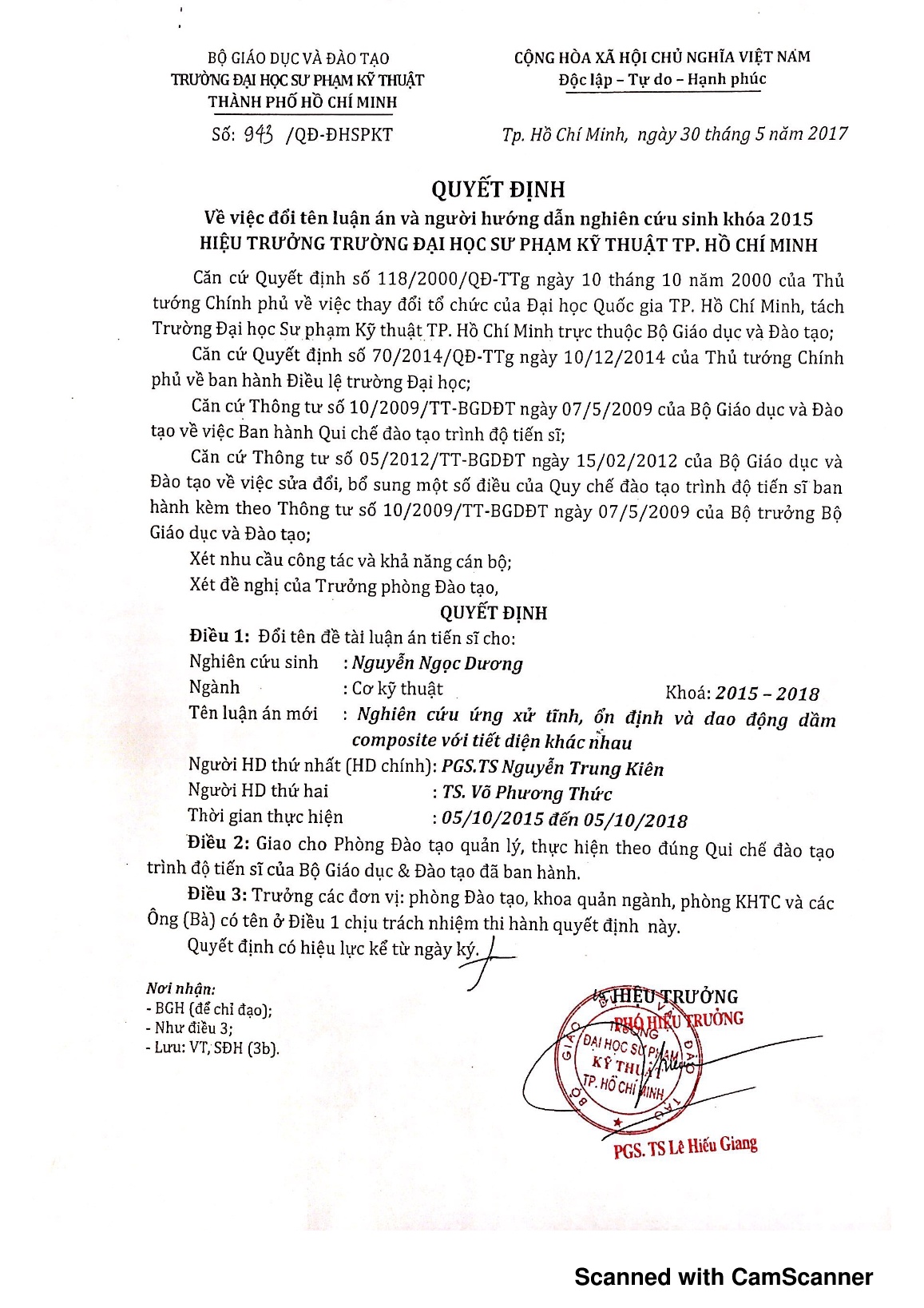
Trang 3
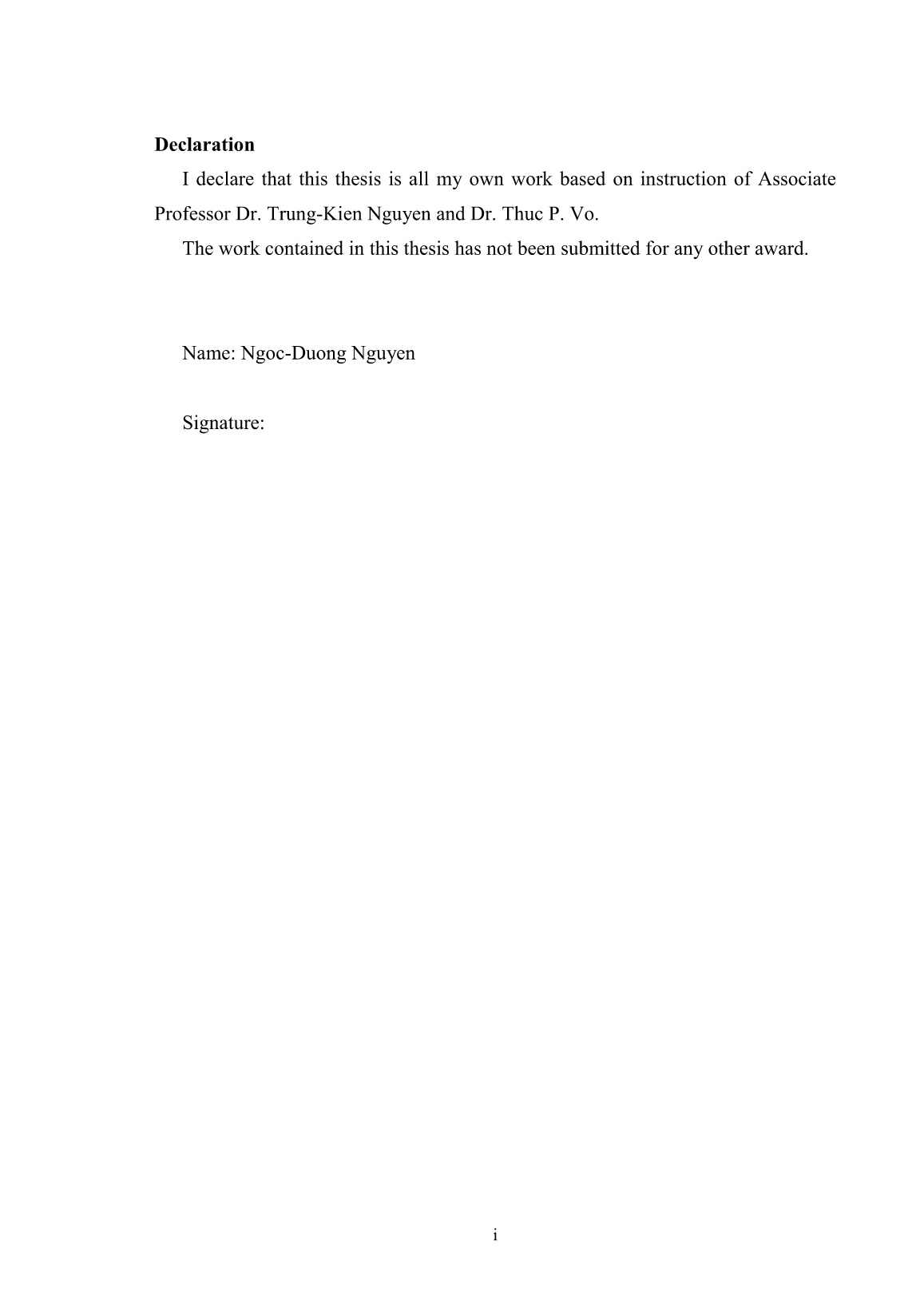
Trang 4
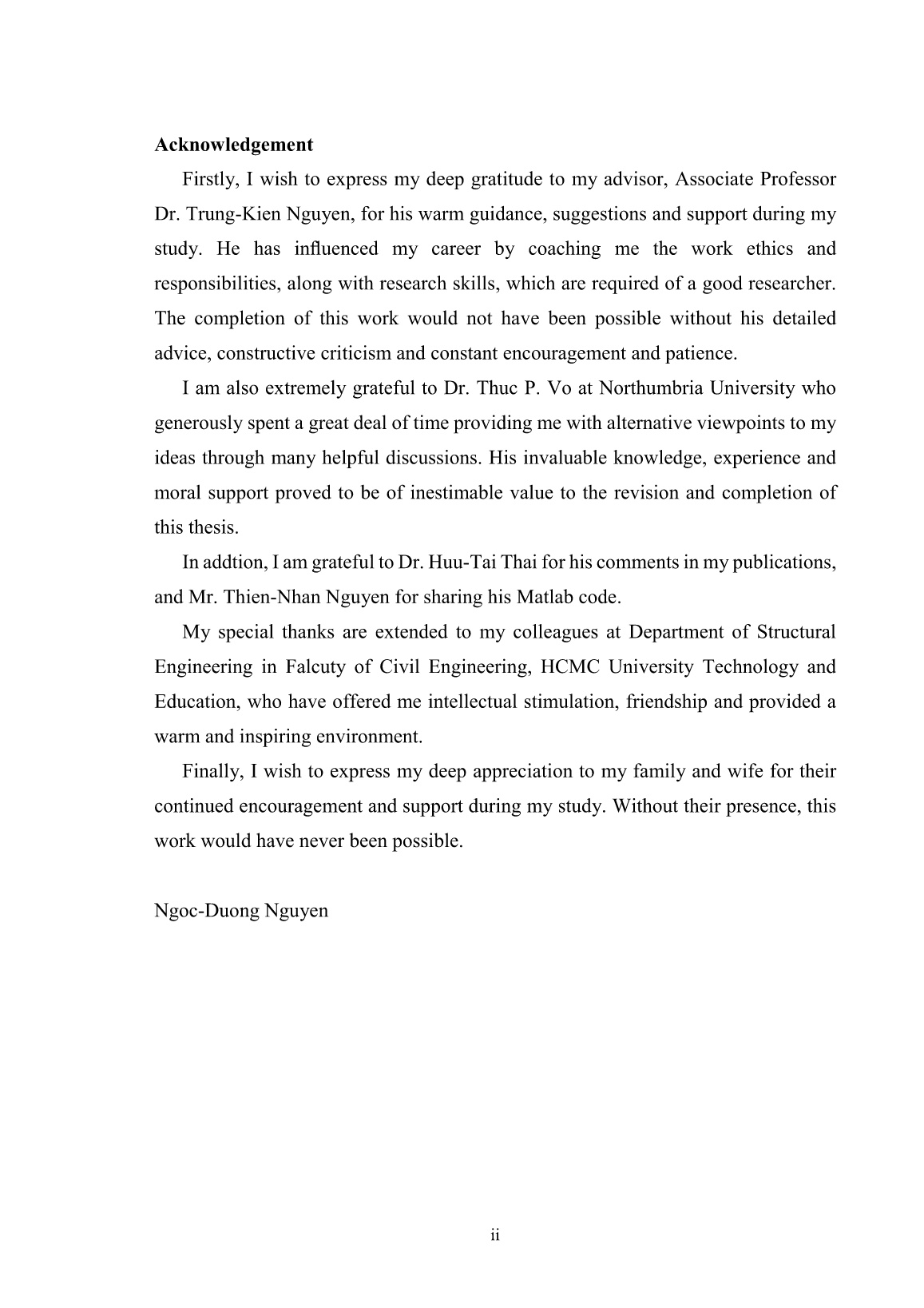
Trang 5
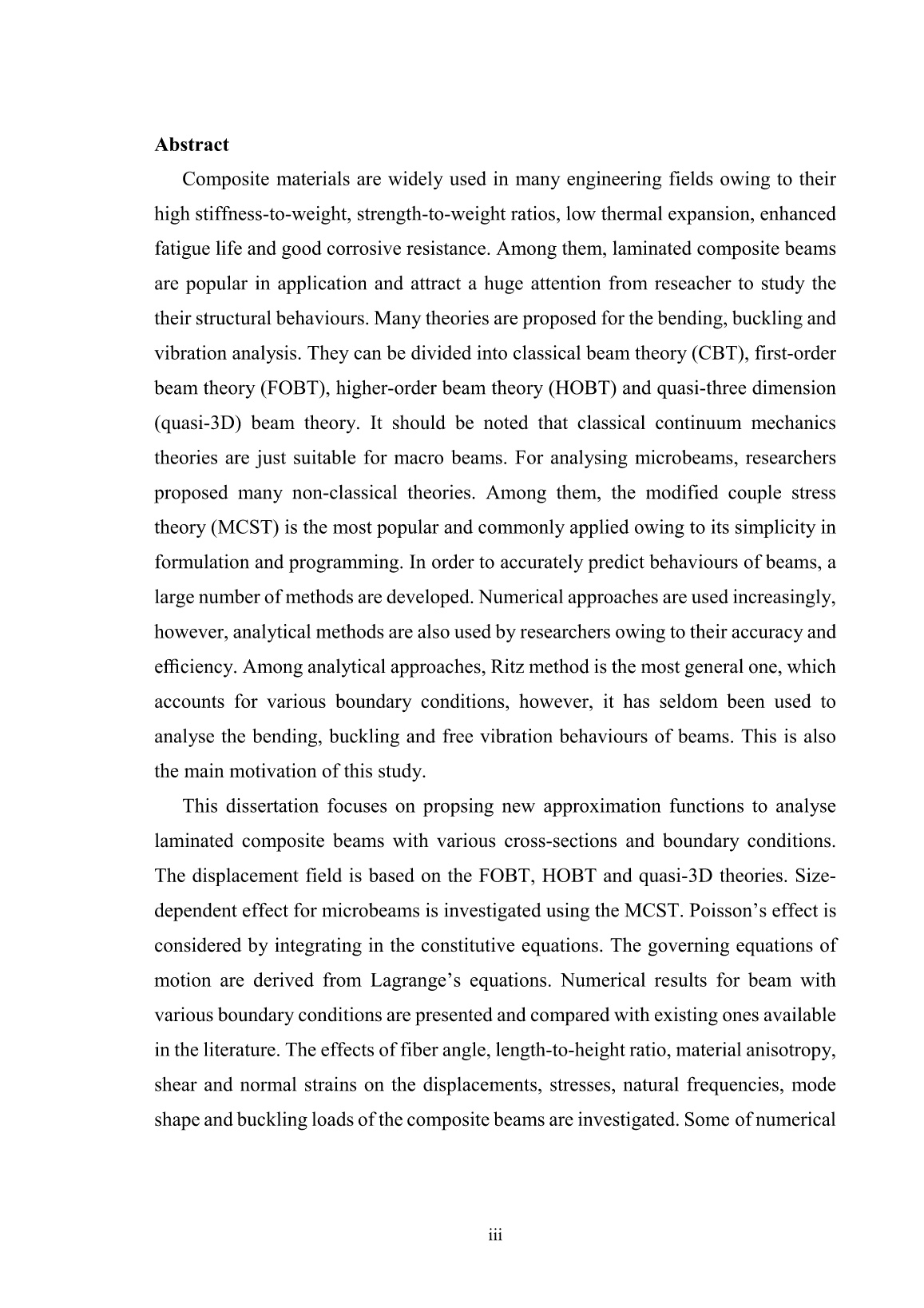
Trang 6
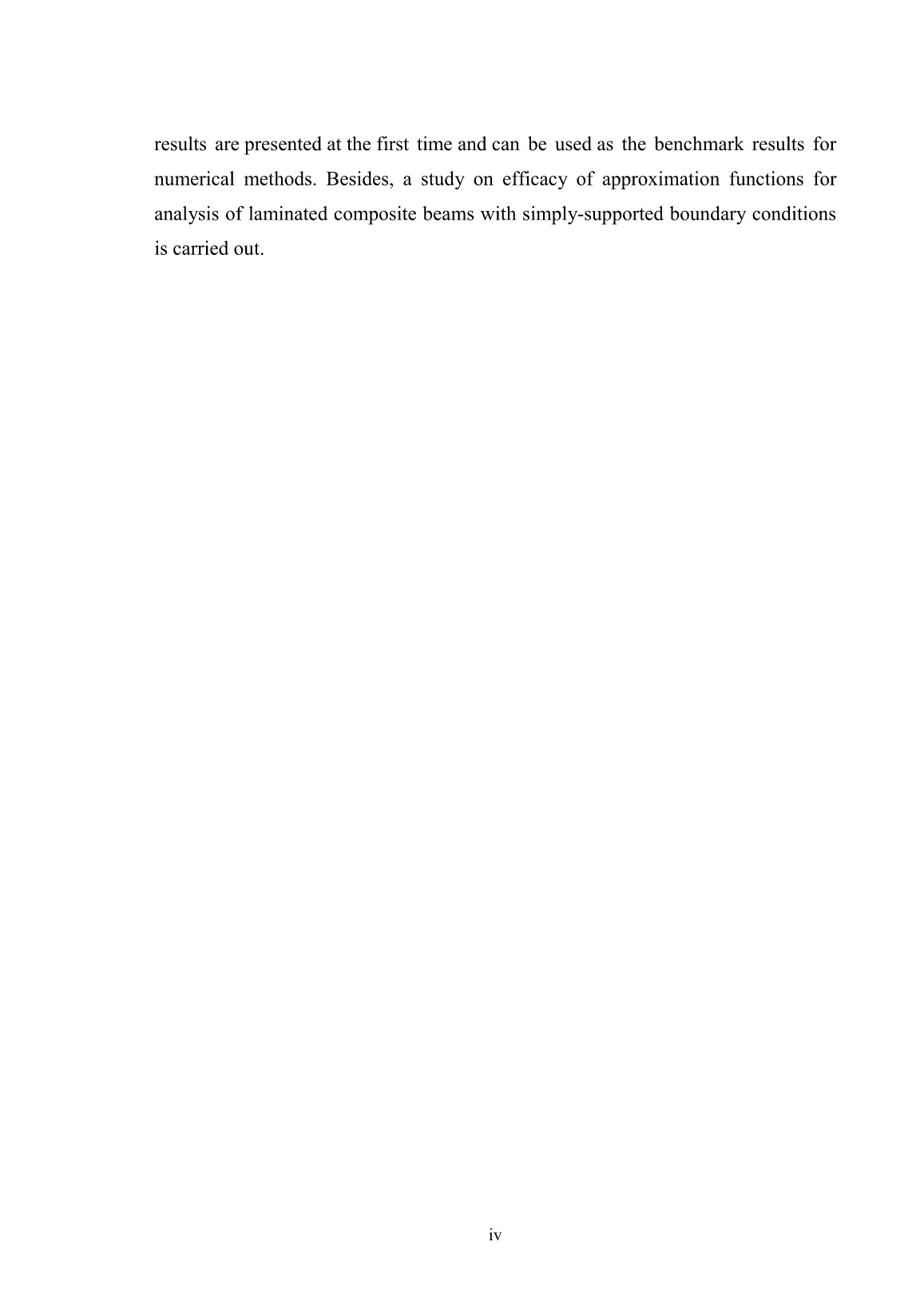
Trang 7
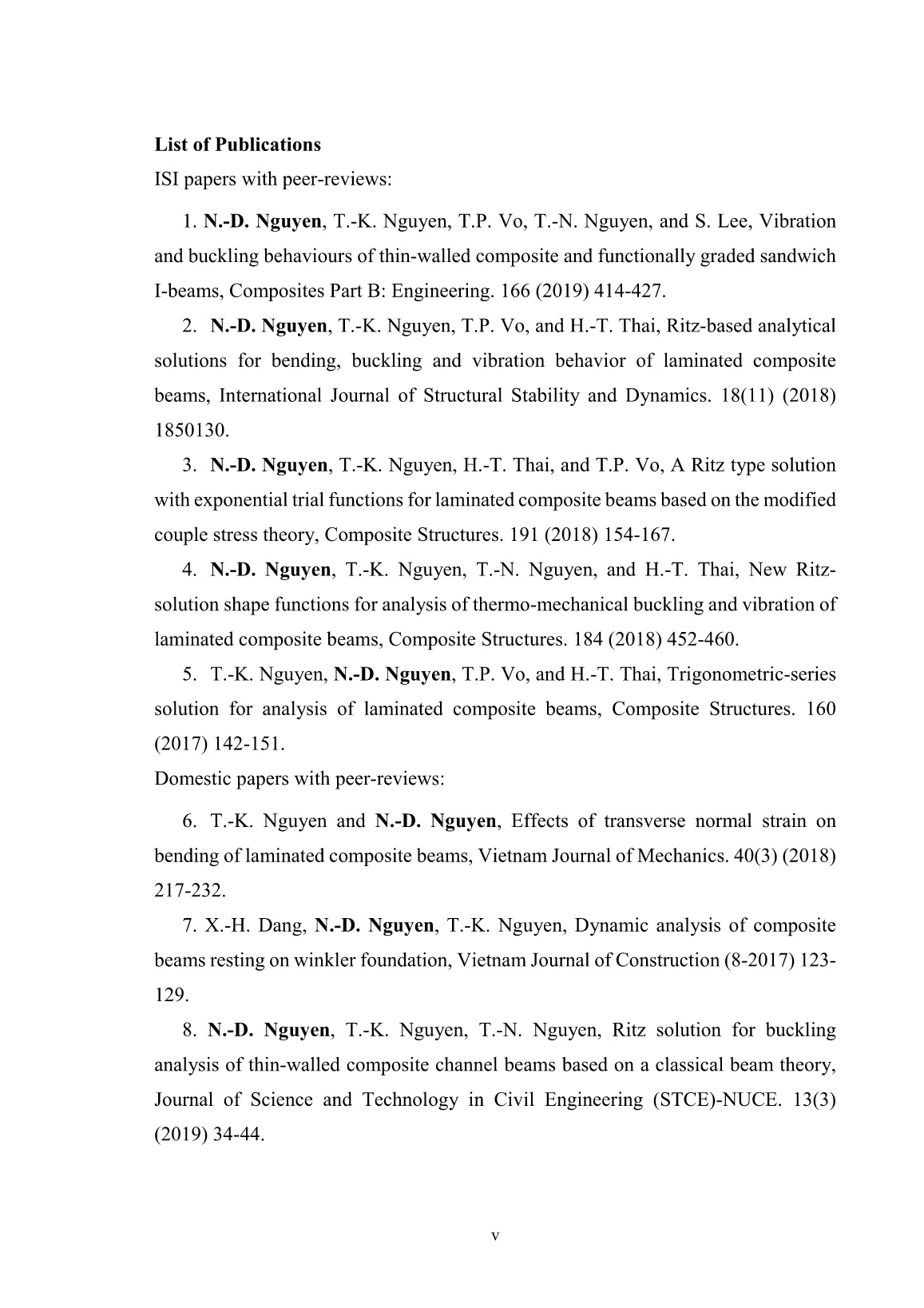
Trang 8
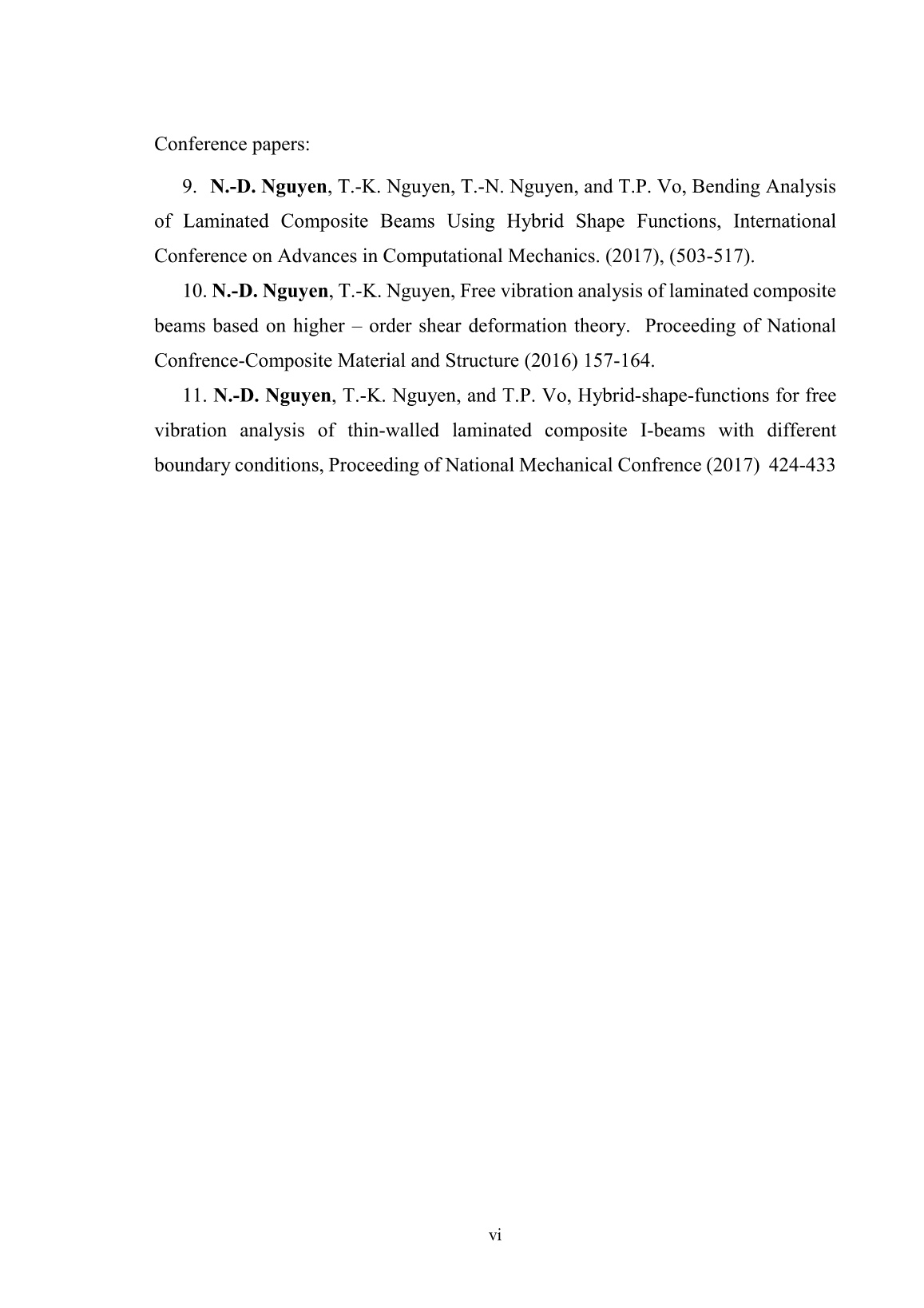
Trang 9
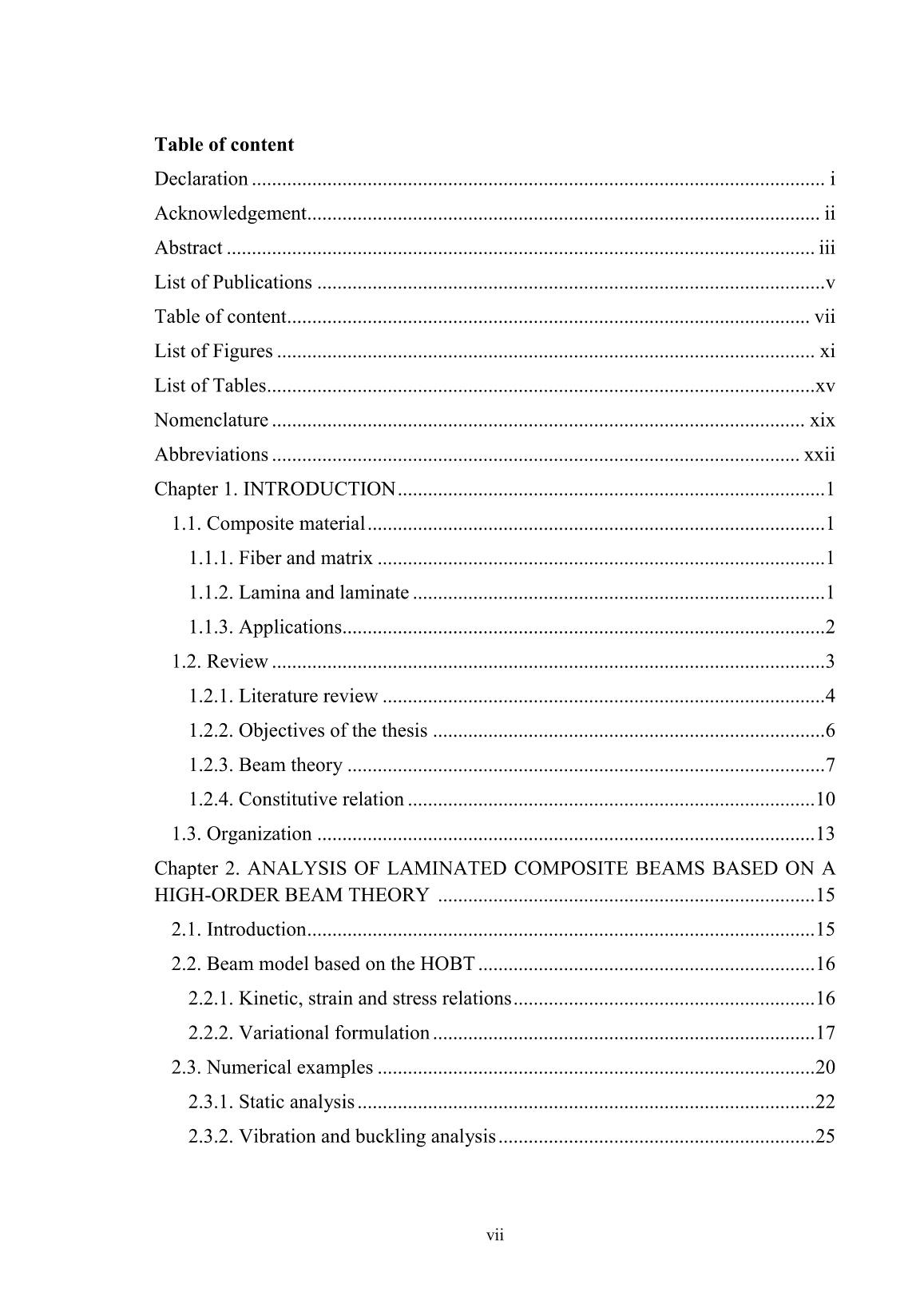
Trang 10
Tải về để xem bản đầy đủ
Bạn đang xem 10 trang mẫu của tài liệu "Luận án Nghiên cứu ứng xử tĩnh, ổn định và dao động dầm composite với tiết diện khác nhau", để tải tài liệu gốc về máy hãy click vào nút Download ở trên.
Tóm tắt nội dung tài liệu: Luận án Nghiên cứu ứng xử tĩnh, ổn định và dao động dầm composite với tiết diện khác nhau
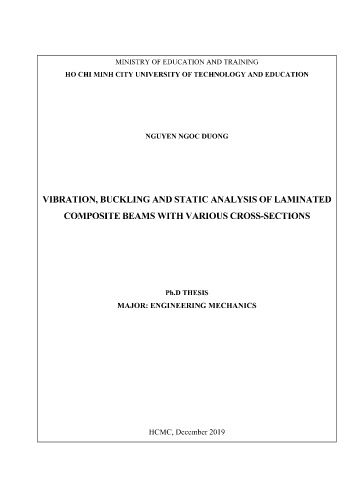
beams ( L/ h 5 ) with all BCs. 60 h / z a. 00/900 b. 00/900/00 Figure 4.1. Distribution of nondimensional transverse displacement through the thickness of (00/900) and (00/900/00) composite beams with S-S boundary condition (MAT II.4). 0.5 0.5 L/h=5 L/h=5 L/h=10 L/h=10 h 0 L/h=50 / 0 L/h=50 z -0.5 -0.5 11 12 13 14 15 16 2 3 4 5 6 7 Nondimensional transverse displacement Nondimensional transverse displacement a. 00/900 b. 00/900/00 Figure 4.2. Distribution of nondimensional transverse displacement through the thickness of (00/900) and (00/900/00) composite beams with C-F boundary condition (MAT II.4). 61 h / z a. 00/900 b. 00/900/00 Figure 4.3. Distribution of nondimensional transverse displacement through the thickness of (00/900) and (00/900/00) composite beams with C-C boundary condition (MAT II.4). 4.3.2. Angle-ply beams This example is extended from previous one. The ( 00 / / 0 0 ) and ( 00 / ) beams are considered. Tables 4.8, 4.9, 4.10 and 4.11 present variation of nondimensional fundamental frequencies, critical buckling loads, mid-span displacements ( x L/ 2, z 0 ) and stresses of beams used Quasi-3D theory respect to the angle-ply of beams. It can be seen that the present results in Table 4.10 and 4.11 are close with those of Vo et al. [19]. 62 Table 4.8. Nondimensional fundamental frequencies of (00/ /00) and (00/ ) composite beams (MAT I.4, E1/E2 = 40). Lay-up BC L/h Angle-ply ( ) 00 300 600 900 00/ /00 S-S 5 9.5498 9.4487 9.2831 9.2083 10 13.9976 13.8130 13.6729 13.6099 50 17.7844 17.4788 17.4558 17.4493 C-F 5 4.3628 4.3047 4.2484 4.2231 10 5.6259 5.5403 5.5059 5.4909 50 6.3803 6.2697 6.2635 6.2622 C-C 5 12.0240 11.8341 11.6020 11.4992 10 20.4355 20.1923 19.8335 19.6723 50 38.4410 37.8172 37.6863 37.6333 00/ S-S 5 9.5498 6.8336 6.2215 6.1400 10 13.9976 7.9772 7.0561 6.9475 50 17.7844 8.5069 7.4191 7.2971 C-F 5 4.3628 2.7077 2.4173 2.3819 10 5.6259 2.9428 2.5837 2.5428 50 6.3803 3.0359 2.6474 2.6043 C-C 5 12.0240 10.4823 10.0347 9.9435 10 20.4355 15.0934 13.8389 13.6637 50 38.4410 19.0914 16.6995 16.4323 63 Table 4.9. Nondimensional critical buckling loads of (00/ /00) and (00/ ) composite beams (MAT I.4, E1/E2 = 40). Lay-up BC L/h Angle-ply ( ) 00 300 600 900 00/ /00 S-S 5 9.2665 9.0709 8.7542 8.6131 10 19.9125 19.3911 18.9974 18.8217 50 32.0563 30.9641 30.8826 30.8596 C-F 5 4.9708 4.8413 4.7432 4.6994 10 7.0644 6.8417 6.7856 6.7622 50 8.1715 7.8897 7.8762 7.8739 C-C 5 12.7118 12.3736 11.8718 11.6517 10 37.0660 36.2838 35.0169 34.4524 50 119.0990 115.2235 114.5322 114.2601 00/ S-S 5 9.2665 4.8298 4.0242 3.9211 10 19.9125 6.5116 5.1007 4.9455 50 32.0563 7.3361 5.5800 5.3981 C-F 5 4.9708 1.6246 1.2717 1.2333 10 7.0644 1.7845 1.3672 1.3236 50 8.1715 1.8418 1.3998 1.3543 C-C 5 12.7118 9.6517 8.7780 8.6154 10 37.0660 19.3221 16.1028 15.6927 50 119.0990 28.8970 22.0782 21.3712 64 Table 4.10. Nondimensional mid-span displacements of (00/ /00) and (00/ ) composite beams under a uniformly distributed load (MAT II.4). Lay-up BC L/h Reference Angle-ply ( ) 00 300 600 900 00/ /00 S-S 5 Present 1.7930 2.0140 2.3030 2.4049 Vo et al. [19] 1.7930 2.0140 2.3030 2.4049 10 Present 0.9222 0.9946 1.0700 1.0965 Vo et al. [19] 0.9222 0.9946 1.0700 1.0965 50 Present 0.6370 0.6608 0.6650 0.6661 Vo et al. [19] 0.6370 0.6608 0.6650 0.6661 C-F 5 Present 5.2683 5.8705 6.5930 6.8442 Vo et al. [19] 5.2774 5.8804 6.6029 6.8541 10 Present 2.9647 3.1810 3.3871 3.4511 Vo et al. [19] 2.9663 3.1828 3.3889 3.4605 50 Present 2.1599 2.2402 2.2529 2.2562 Vo et al. [19] 2.1602 2.2405 2.2531 2.2565 C-C 5 Present 1.0866 1.2616 1.4711 1.5431 Vo et al. [19] 1.0998 1.2670 1.4766 1.5487 10 Present 0.3958 0.4459 0.5098 0.5323 Vo et al. [19] 0.3968 0.4469 0.5108 0.5332 50 Present 0.1367 0.1431 0.1462 0.1473 Vo et al. [19] 0.1367 0.1431 0.1462 0.1472 00/ S-S 5 Present 1.7930 3.6681 4.6312 4.7645 Vo et al. [19] 1.7930 3.6634 4.6135 4.7346 10 Present 0.9222 2.7463 3.6070 3.6942 Vo et al. [19] 0.9222 2.7403 3.5871 3.6626 50 Present 0.6370 2.4454 3.2725 3.3446 Vo et al. [19] 0.6370 2.4406 3.2540 3.3147 C-F 5 Present 5.2683 11.6981 14.8708 15.2595 65 Lay-up BC L/h Reference Angle-ply ( ) 00 300 600 900 Vo et al. [19] 5.2774 11.6830 14.8020 15.1540 10 Present 2.9647 9.1667 12.0630 12.3387 Vo et al. [19] 2.9663 9.1499 12.0020 12.2440 50 Present 2.1599 8.3044 11.1059 11.3428 Vo et al. [19] 2.1602 8.2916 11.0540 11.2580 C-C 5 Present 1.0866 1.5673 1.8524 1.9164 Vo et al. [19] 1.0998 1.5755 1.8575 1.9193 10 Present 0.3958 0.7797 0.9771 1.0050 Vo et al. [19] 0.3968 0.7783 0.9726 0.9983 50 Present 0.1367 0.4987 0.6646 0.6790 Vo et al. [19] 0.1367 0.4974 0.6608 0.6733 Table 4.11. Nondimensional stresses of (00/ /00) and (00/ ) composite beams with S-S boundary condition under a uniformly distributed load (MAT II.4). Lay-up L/h Reference Angle-ply ( ) 00 300 600 900 a. Normal axial stress 00/ /00 5 Present 0.9556 1.0062 1.0556 1.0732 Vo et al. [19] 0.9498 1.0010 1.0500 1.0670 10 Present 0.7998 0.8325 0.8459 0.8504 Vo et al. [19] 0.8002 0.8326 0.8459 0.8502 50 Present 0.7520 0.7785 0.7803 0.7806 Vo et al. [19] 0.7523 0.7788 0.7806 0.7809 00/ 5 Present 0.9556 0.3736 0.2476 0.2380 Vo et al. [19] 0.9498 0.3746 0.2510 0.2428 10 Present 0.7998 0.3655 0.2445 0.2346 66 Lay-up L/h Reference Angle-ply ( ) 00 300 600 900 Vo et al. [19] 0.8002 0.3661 0.2464 0.2375 50 Present 0.7520 0.3631 0.2436 0.2336 Vo et al. [19] 0.7523 0.3633 0.2449 0.2358 b. Shear stress 00/ /00 5 Present 0.6668 0.5721 0.4456 0.4013 Vo et al. [19] 0.6679 0.5729 0.4462 0.4017 10 Present 0.7078 0.6070 0.4751 0.4286 Vo et al. [19] 0.7100 0.6088 0.4762 0.4295 50 Present 0.7439 0.6377 0.5006 0.4521 Vo et al. [19] 0.7434 0.6373 0.5003 0.4518 00/ 5 Present 0.6668 0.7545 0.8646 0.9052 Vo et al. [19] 0.6679 0.7598 0.8703 0.9117 10 Present 0.7078 0.7902 0.9046 0.9476 Vo et al. [19] 0.7100 0.7913 0.9039 0.9474 50 Present 0.7439 0.8234 0.9418 0.9869 Vo et al. [19] 0.7434 0.7434 0.8085 0.8481 Figs. 4.4-4.6 show the displacements of the ( 00 / / 0 0 ) and ( 00 / ) thick beams L/ h 3 increase with the increase of angle-ply . There are significant differences between the results of HOBT and quasi-3D solutions. 67 8 HOBT, 0o/o/0o o o o 7.5 Quasi-3D, 0 / /0 , z=0 Quasi-3D, 0o/o/0o, z=-h/2 o o 7 HOBT, 0 / Quasi-3D,0o/o, z=0 o o 6.5 Quasi-3D, 0 / , z=-h/2 6 5.5 5 4.5 Nondimensional transverse displacement transverse Nondimensional 4 3.5 0 10 20 30 40 50 60 70 80 90 o Figure 4.4. The nondimensional mid-span transverse displacement with respect to the fiber angle change of composite beams with S-S boundary condition ( L/ h 3, MAT II.4). 68 22 20 HOBT, 0o/o/0o Quasi-3D, 0o/o/0o, z=0 18 Quasi-3D, 0o/o/0o, z=-h/2 HOBT, 0o/o Quasi-3D,0o/o, z=0 16 Quasi-3D, 0o/o, z=-h/2 14 12 Nondimensional transverse displacement transverse Nondimensional 10 8 0 10 20 30 40 50 60 70 80 90 o Figure 4.5. The nondimensional mid-span transverse displacement with respect to the fiber angle change of composite beams with C-F boundary condition ( L/ h 3, MAT II.4). 69 4.2 4 3.8 3.6 3.4 3.2 3 HOBT, 0o/o/0o Quasi-3D, 0o/o/0o, z=0 2.8 Quasi-3D, 0o/o/0o, z=-h/2 HOBT, 0o/o Nondimensional transverse displacement transverse Nondimensional 2.6 Quasi-3D,0o/o, z=0 o o 2.4 Quasi-3D, 0 / , z=-h/2 2.2 0 10 20 30 40 50 60 70 80 90 o Figure 4.6. The nondimensional mid-span transverse displacement with respect to the fiber angle change of composite beams with C-C boundary condition ( L/ h 3, MAT II.4). 4.3.3. Arbitrary-ply beams The example aims to analyse behaviours of composite beams with arbitrary-ply. The first, the symmetric single-layered C-F beams of 150 and 300 ply (MAT III.4) are considered. Their first four natural frequencies are displayed in Table 4.12 and compared with those from Chen et al. [84] and experiment results of Abarcar and Cunniff [128]. It is seen that there is consistency between present results and those from [84] and [128], especially the first mode of vibration. 70 Table 4.12. Fundamental frequencies (Hz) of single-layer composite beam with C-F boundary condition (MAT III.4). Lay Theory Reference Mode -up 1 2 3 4 150 HOBT Present 82.19 512.86 1426.29 - Quasi-3D Present 82.22 513.09 1427.12 - Chen et al. [84] 82.55 515.68 1437.02 - Experiment Abarcar and Cunniff [128] 82.50 511.30 1423.40 1526.90* 300 HOBT Present 52.63 329.13 918.51 1791.22 Quasi-3D Present 52.67 329.43 919.48 1793.62 Chen et al. [84] 52.73 330.04 922.45 1803.01 Experiment Abarcar and Cunniff [128] 52.70 331.80 924.70 1766.90 Note: ‘*’ denotes: the results are the torsional mode Table 4.13. Nondimensional fundamental frequencies of arbitrary-ply laminated composite beams (MAT IV.4). Lay-up Theory Reference BC S-S C-F C-C 450/-450/450/-450 HOBT Present 0.7961 0.2849 1.7592 Chandrashekhara 0.8278 0.2962 1.9807 and Bangera [27] Quasi-3D Present 0.7962 0.2852 1.7629 Chen et al. [84] 0.7998 0.2969 1.8446 300/-500/500/-300 HOBT Present 0.9726 0.3486 2.1255 Quasi-3D Present 0.9728 0.3489 2.1281 Chen et al. [84] 0.9790 0.3572 2.2640 Next, the un-symmetric (450/-450/450/-450) and (300/-500/500/-300) beams (MAT IV.4) with various BCs are considered, and their responses on fundamental frequencies are reported in Table 4.13. Good agreements of the present theory and 71 / previous studies are again found. Finally, the symmetric s composite beams (MAT IV.4) are considered. The effects of angle-ply variation on the frequency, buckling and displacement are again illustrated in Table 4.14. In addition, the nondimensional fundamental frequencies are also shown in Fig. 4.7. It can be seen that the present frequencies are closer to those of [47, 84] and smaller than to those of [78, 130] which neglected the Poisson’s effect, especially for beams with arbitrary-ply. This phenomenon can be explained as follows. In present study, Poisson’s effect is incorporated in the constitutive equations by assumingy xy yz 0 . It means that the strains ( y , yz 0 , xy ) are nonzero. For beams with arbitrary-ply (30 ), when the Poisson’s effect is considered, the beam’s stiffness constants are much smaller than when the Poisson’s effect is neglected. This causes beams more flexible [85]. It leads to the conclusion that the Poisson’s effect is quite significant to the arbitrary-ply laminated beams, and that the neglect of this effect is only suitable for the cross-ply laminated beams. It should be also noted that there is deviation between the present critical buckling load and those from Wang et al. [33]. This situation occurred because Wang et al. [33] mentioned the rotation of the normal to the mid-plane in y -direction in displacement field. Table 4.14. Nondimensional fundamental frequencies, critical buckling loads and / mid-span displacements of s composite beams (MAT IV.4). BC Theory Reference Angle-ply ( ) 00 300 600 900 a. Fundamental frequency S-S HOBT Present 2.649 0.999 0.731 0.729 Aydogdu [47] 2.651 1.141 0.736 0.729 Nguyen et al. [130] 2.656 2.103 1.012 0.732 FOBT Chandrashekhara et al. [78] 2.656 2.103 1.012 0.732 Quasi-3D Present 2.650 0.999 0.731 0.730 72 BC Theory Reference Angle-ply ( ) 00 300 600 900 C-F HOBT Present 0.980 0.358 0.261 0.261 Aydogdu [47] 0.981 0.414 0.262 0.260 Nguyen et al. [130] 0.983 0.768 0.363 0.262 FOBT Chandrashekhara et al. [78] 0.982 0.768 0.363 0.262 Quasi-3D Present 0.980 0.358 0.262 0.262 C-C HOBT Present 4.897 2.180 1.620 1.615 Aydogdu [47] 4.973 2.195 1.669 1.619 Nguyen et al. [130] 4.912 4.131 2.202 1.621 FOBT Chandrashekhara et al. [78] 4.849 4.098 2.198 1.620 Quasi-3D Present 4.901 2.183 1.626 1.625 Chen et al. [84] 4.858 2.345 1.671 1.623 b. Critical buckling load S-S HOBT Present 10.709 1.522 0.816 0.813 Quasi-3D 10.713 1.523 0.816 0.813 C-F HOBT Present 2.973 0.386 0.206 0.205 Quasi-3D 2.974 0.387 0.206 0.206 FOBT Wang et al. [33] 2.971 0.712 0.208 0.205 C-C HOBT Present 30.689 5.747 3.154 3.136 Quasi-3D 30.726 5.758 3.168 3.160 FOBT Wang et al. [33] 30.592 10.008 3.187 3.136 c. Mid-span displacement S-S HOBT Present 1.196 8.437 15.745 15.811 Quasi-3D 1.195 8.432 15.733 15.796 C-F HOBT 3.987 28.611 53.452 53.675 Quasi-3D 3.983 28.570 53.170 53.208 C-C HOBT 0.355 1.815 3.289 3.308 Quasi-3D 0.355 1.812 3.272 3.276 73 y c n e u q e r f y r a t n e m a d n u f l a n o i s n e m i d n o N Figure 4.7. Effects of the fibre angle change on the nondimensional fundamental / frequency of s composite beams (MAT IV.4). 4.4. Conclusions The new approximation functions which combined polynomial and exponential functions are presented to study the free vibration, buckling and static behaviours of laminated composite beams. The displacement field is based on a quasi-3D theory accounting for a higher-order variation of both axial and transverse displacements. Poisson’s effect is incorporated in beam model. Numerical results for different BCs are obtained to compare with previous studies and investigate effects of material anisotropy, Poisson’s ratio and angle-ply on the natural frequencies, buckling loads, displacements and stresses of composite beams. The obtained results show that: - The transverse normal strain effects are significant for un-symmetric and thick beams. 74 - The Poisson’s effect is quite significant to the laminated beams with arbitrary lay-up, and the neglect of this effect is only suitable for the cross-ply laminated beams. - The present model is found to be appropriate for vibration, buckling and bending analysis of cross-ply and arbitrary-ply composite beams. 75 Chapter 5. SIZE DEPENDENT BEHAVIOURS OF MICRO GENERAL LAMINATED COMPOSITE BEAMS BASED ON MODIFIED COUPLE STRESS THEORY 6 5.1. Introduction In Chapters Two, Three and Four, the macro composite beams are analysed using classical continuum mechanics theories. However, the use of composite materials with microstructure in micro-electro-mechanical systems such as microswitches and microrobots has recently motivated many researchers [131-133] to study the behaviour materials in order of micron and sub-micron. The results obtained by these studies show that the classical continuum mechanics theories can not describe the behaviour of such micro-structures due to their size dependencies. A review of non-classical continuum mechanics models for size-dependent analysis of small-scale structures can be found in [134]. These models for size- dependent analysis can be divided into three groups: nonlocal elasticity theory, micro continuum theory and strain gradient family. Nonlocal elasticity theory was proposed by Eringen [3, 135], Eringen and Edelen [136], and its recent applications can be found in [137-140]. In this theory, the stress at a reference point is considered as a function of strain field at all points of the body, and thus the size effect is captured by means of constitutive equations using a nonlocal parameter. Micro continuum theory in which each particle can rotate and deform independently regardless of the motion of the centroid of the particle was developed by Eringen [141-143]. The strain gradient family is composed of the strain gradient theory [133, 144], the modified strain gradient theory [131], the couple stress theories [4-6] and the modified couple stress theory (MCST) [145]. In the strain gradient family, both strains and gradient of strains are considered in the strain energy. The size effect is accounted for using material length scale parameters (MLSP). The MCST introduced an equilibrium condition of moments of couples to enforce the couple stress tensor to be symmetric. Consequently, MCST needs only one MLSP instead of two as the couple stress 6 A slightly different version of this chapter has been published in Composite Structures in 2018 76 theories, or three as the modified strain gradient theory. This feature makes the MCST easier to use and more preferable to capture the size effect because the determination of MLSP is a challenging task. Chen et al. [12, 146] developed Timoshenko and Reddy beam models to analyse the static behaviours of cross-ply simply supported microbeams. Chen and Si [147] suggested an anisotropic constitutive relation for the MCST and used global-local theory to analyse Reddy beams using Navier solutions. By using a meshless method, Roque et al. [10] analysed the static bending response of micro laminated Timoshenko beams. A size-dependent zigzag model was also proposed by Yang et al. [7] for the bending analysis of cross-ply microbeams. Abadi and Daneshmehr [148] analysed the buckling of micro composite beams using Euler-Bernoulli and Timoshenko models. Mohammadabadi et al. [37] also predicted the thermal effect on size-dependent buckling behaviour of micro composite beams. The generalized differential quadrature method was used to solve with different boundary conditions (BCs). Chen and Li [149] predicted dynamic behaviours of micro laminated Timoshenko beams. Mohammad-Abadi and Daneshmehr [8] used the MCST to analyse free vibration of cross-ply microbeams by using Euler-Bernoulli, Timoshenko and Reddy beam models. Ghadiri et al. [150] analysed the thermal effect on dynamics of thin and thick microbeams with different BCs. Most of the above- mentioned studies mainly focused on cross-ply microbeams. Therefore, the study of micro general laminated composite beams (MGLCB) with arbitrary lay-ups is necessary. Despite the fact that numerical approaches are used increasingly [10, 21, 50, 137, 138, 151], Ritz method is still efficient to analyse structural behaviours of beams [44, 45, 48, 130, 152-155]. In Ritz method, the accuracy and efficiency of solution strictly depends on the choice of approximation functions. An inappropriate choice of the approximation functions may cause slow convergence rates and numerical instabilities [48]. The approximation functions should satisfy the specified essential BCs [1]. If this requirement is not satisfied, the Lagrangian multipliers and penalty 77 method can be used to handle arbitrary BCs [44, 126, 156]. However, this approach leads to an increase in the dimension of the stiffness and mass matrices and causing computational costs. Therefore, the objective of this Chapter is to propose approximation functions for Ritz type solutions that give fast convergence rate, numerical stability and satisfy the specified BCs. In this Chapter, new exponential approximation functions are proposed for the size-dependent analysis of MGLCB based on the MCST using a refined shear deformation theory. Lagrange’s equations are used to obtain the governing equations of motion. The accuracy of the present model is demonstrated by verification studies. Numerical results are presented to investigate the effects of MLSP, length-to-height ratio and fibre angle on the deflections, stresses, natural frequencies and critical buckling loads of micro composite beams with arbitrary lay-ups. 5.2. Theoretical formulation A MGLCB with rectangular cr
File đính kèm:
 luan_an_nghien_cuu_ung_xu_tinh_on_dinh_va_dao_dong_dam_compo.pdf
luan_an_nghien_cuu_ung_xu_tinh_on_dinh_va_dao_dong_dam_compo.pdf Tom tat Luan an-Tieng Anh.pdf
Tom tat Luan an-Tieng Anh.pdf Tom tat Luan an-Tieng Viet.pdf
Tom tat Luan an-Tieng Viet.pdf Trang thong tin Luan an-Tieng Anh.pdf
Trang thong tin Luan an-Tieng Anh.pdf Trang thong tin Luan an-Tieng Viet.pdf
Trang thong tin Luan an-Tieng Viet.pdf

